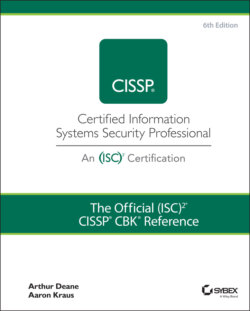Читать книгу The Official (ISC)2 CISSP CBK Reference - Leslie Fife, Aaron Kraus - Страница 70
Licensing
ОглавлениеLegal protections over intellectual property allow creators and inventors to profit from their work. Unfortunately, the ease with which information can be duplicated and transmitted has made it easier for people to copy information in violation of the legitimate owner's rights.
From an economic perspective, the effect is tremendous. By 2022, the global trade in counterfeited and pirated products, both physical and online, will grow to between 1.9 and 2.8 trillion dollars. Estimates by the Business Software Alliance (BSA) suggest that more than 40 percent of the software in use worldwide is not properly licensed.
Counterfeit goods also present significant economic as well as physical risks. A $460 billion–a–year industry, counterfeiting has been simplified by the e-commerce platforms and expedited international shipping, which has accompanied the lowering of trade barriers. The secondary impacts of illegal use of intellectual property are equally surprising. One estimate suggests that 23 percent of all bandwidth is consumed by activities that infringe on intellectual property.
While emerging technologies present opportunities for improving licensing methods, lack of enforcement remains one of the largest hurdles. With more applications transitioning to a cloud-enabled model, ensuring legal software licensing goes hand in hand with software as a service.
The use of unlicensed software increases the risk of software vulnerabilities, as the users are unable to get patches and updates. This leaves the users of bootleg software at risk when compromises are found in the software. While the vendors patch their legitimate versions, the unlicensed versions don't get the updates. It is somewhat ironic that by illegally using unlicensed software, individuals are more likely to be targeted by other illegal actors. The effect of this was seen most clearly in the rapid distribution of the WannaCry malware in China, where estimates suggest that 70 percent of computer users in China are running unlicensed software, and state media acknowledged that more than 40,000 institutions were affected by the attack.
